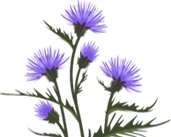Visual Arts
The Visual Arts Program consists of
A Wellbeing focus including Learning to Learn strategies
Skills lessons
Personalised learning sessions
STEM based Group challenges
One-off school based creative and collaborative projects
A focus is given to specific skills to assist students to strengthen their relationships, build positive emotions, enhance personal resilience and encourage a healthy lifestyle.
Unlocking the ‘Learning to Learn’ strategies equips our students with a positive growth mindset about their learning and resilience to self-manage. The aim is for students to understand and be articulate about how and why they learn and be able to set goals and reflectively assess their progress to set their next steps. Students get to understand themselves as learners with the knowledge of how to move to the next step in their learning and how to be successful learners. We constantly talk about success criteria.
Visual Arts skills lessons provide a chance for students to gain the knowledge and skills of Visual Arts. For example, students experiment with a range of techniques in drawing, collage, construction, sculpture etc and gain an understanding of the possibilities and qualities of a range of materials. Students use technologies, traditional and digital, and practice a range of skills, processes and ideas to express themselves and learn about artworks past and present, local and global.
Personalised learning pedagogies help give students more control over their learning and far more input into decision making. Student agency allows students in the Art Room to pace their learning, decide their content (including each step taken), gather and use resources and materials of choice, work at their own skill level and beyond, gather feedback from multiple people, totally connect with real interests and own their outcomes. Students follow a design thinking process where Positive Journaling is used to document their project.
Participating in personalised learning projects is the most powerful way I have experienced to engage and intellectually stretch students. They give their full focus to learning, stay in the flow and follow up learning outside of class time. I see them love learning and help others with learning as well as connect with and involve their family and community on a larger scale.
Students also participate in large STEM based projects which are co-designed with them and focus on large scale collaborative problem solving and hands on creations. They follow the design thinking process and the projects require lots of research, discussion, designing, building, testing, evaluating and redesigning.
One-off school based creative and collaborative projects (for example mosaics, canvases and artworks for special events) are pursued on a voluntary/ high interest or elective basis. These are small group projects and run alongside daily lessons. Volunteers can opt in and opt out as they choose and journal their contribution as part of their choice learning.





